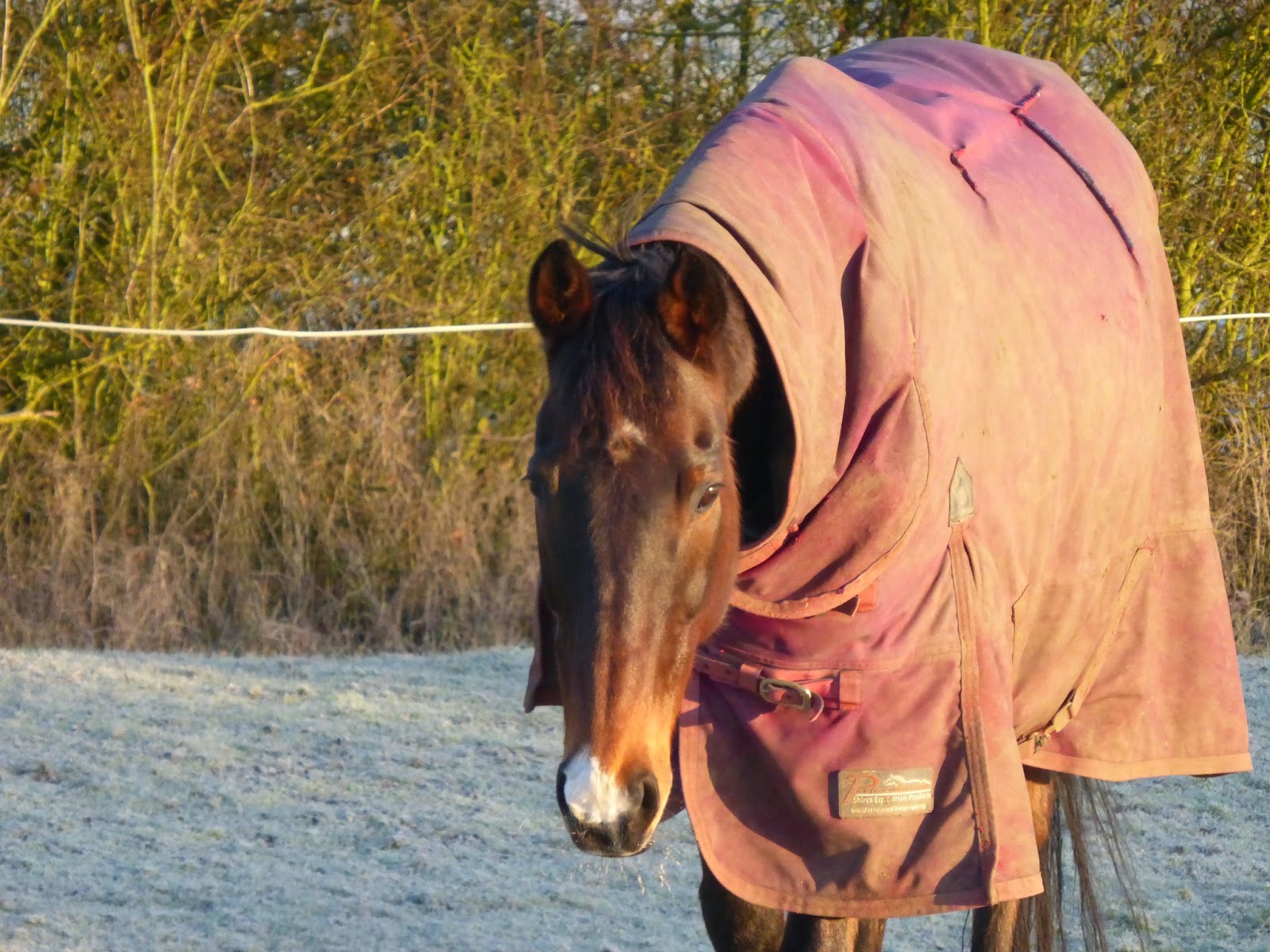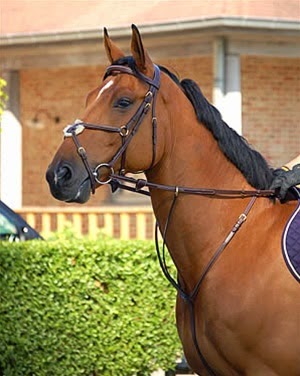There are a huge variety of bits available and several
different types of martingales. Bits and biting is an extensive and complicated
subject. However, following the 'basic' level of
information I have been sharing so far in these blogs I am going to stick to
the SNAFFLE today. Next year I will be
progressing to more of a BHS Stage 2 level with the blogs.
Bits
Horses' mouths are sensitive (like our own) therefore, we
must take care with our hands when riding and when choosing a bit. Once damaged the effects are difficult to
remedy. Careless riding, rough handling
and riding will make a bad mouth, horses are not born with 'bad mouths'.
The main point to remember is that the thinner the
mouthpiece the sharper the action! The pressure points that bits are designed
to work on include (not all bits work on all points):
- The tongue
- The bars (the flesh covered jaw bone between the
front and back teeth) where the bit rests
- The lips
- The curb groove (chin groove)
- The poll
- The nose
- The roof of the mouth
The SNAFFLE bit is the most common, however, there are a
huge number of different ones available now.
The snaffle with a straight mouthpiece or mullen mouthpiece are the
kindest. These bits do not allow independent control of each side of the mouth.
Eggbutt Mullen Mouth
Snaffles can also be jointed and the severity will depend on
the thickness of the mouth piece, the shape of the arms and the tightness of
the joint. The greater the curve of the
arms and the tighter the joint the less sharp the 'nutcracker' action will be
on the tongue.
The eggbutt snaffle has fixed rings which ensures the lips
are not pinched, the rings are usually large enough that they cannot be pulled
through the horses' mouth.
Although, both eggbutt
snaffles the one below is more severe as it has a thinner mouthpiece.
The twisted snaffle below, is a much more severe bit as the
mouthpiece is rough and can cause damage if used by an inexperienced or rough
rider.
Snaffles can also come with 'loose rings' which encourage a
relaxed jaw and mobile tongue, the disadvantage is that they can pinch the lips
between the ring and the mouthpiece.
Snaffles can also have 'cheeks' which ensure the bit cannot
be pulled through the horse's mouth. These have the added advantage of putting
gentle pressure on the side of the horses head, which can help keep the horses
head straight. This can also help with
turning a horse and so is useful for training young horses. The disadvantages with these is that the long
arms can get caught on all sorts of things!
The half cheek snaffle has similar advantages to the full
cheek above, however, without the upper half it is less likely to become caught
up.
The 'D' ring snaffle falls between the eggbutt and the full
cheek snaffle. The arms provide the
external pressure but they are not able to get caught up.
This is a 'D' ring
mullen mouth snaffle.
Hanging snaffles are another type and it is the bit I use
for Basil. I have seen contrasting
information on these as some people insist they can exert pressure on the poll,
others say they can't because there is no leverage from where the reins are
attached. I have not seen any poll
pressure exerted on Basil when I pull the reins. The 'cheek' sections act in a similar way to
the cheeks on the bits above by exerting some external pressure on the side of
the cheeks. However, the design means there is no possibility of the bit
getting caught.
This hanging snaffle
also has a french link!
French link snaffles have a flat spatula between the 2
joints (not to be confused with the Dr Bristol) which lies flat on the horses
tongue. This limits the nutcracker
effect but allows the rider independent control of each side of the mouth.
For comparison you can see that the Dr Bristol also has a
spatula but it is angled so that the edge can push into the horse's tongue.
Once you have some knowledge of bits and an understanding of
their actions you will be better able to appreciate how your riding affects the
horse. Always remember though that
horses are individuals and some horses will go better in a particular type of
bit ... sometimes trial and error is the best way.
Fitting a bit
When fitting a bridle it is important that the bit is in the
correct position, it should just cause a wrinkle at the corners of the
mouth. The bit must not be too low as it
may bang on the horses incisor teeth but if it is too high it will cause damage
to the lips or may bang on the molars.
As mentioned in last week's 'Bridles' blog you should ensure
that the cheekpieces are fastened equally on both sides so that the bit is
level in the horse's mouth.
The size of the bit is also important as a bit that is too
wide will be uncomfortable, will move around too much and will have the wrong
action on the mouth. A bit that is too
small will pinch the lips or the ring may be pulled through the mouth. To correctly size a bit you should straighten
it within the horse's mouth and then be able to place your thumb tip on either
side of the mouth between the lips and the bit rings (approx. 1/4 inch or
3/4cm).
Martingales
There are several types of martingales available, the
purpose of a martingale is to prevent the horse from raising his head high and
past the point of control. They consist
of a neck strap with an additional strap with a loop at one end that attaches
to the girth and the ability to be fixed at the top to either the reins or the
noseband depending on the type.
A running martingale.
A running martingale has 2 smaller straps at the top which
each end with a metal ring, a rein is passed through each of these rings (see
above picture). This means that whilst
the reins are held correctly the horse will be unable to lift their head past
the level of control. There should be rubber or leather stops on the reins to
ensure the rings don't slip forward to interfere with the bit.
Fitting: to fit a running martingale ensure that the neck
strap allows one hand's width between the strap and the horse. If it is too tight it will restrict
breathing, too loose and it will hang too low.
The girth strap should also not be too tight or too loose. The girth is
put through the loop ensuring it is in the centre and lying flat. The straps which attach to the reins should
be long enough that they can reach (or almost) the level of the withers if held up either side of the horse (when not
attached to the reins). Too short straps
will interfere with the normal action of the reins, too long and they will have
little or no effect.
Putting on: hold the martingale with the buckle on the near
side (left) of the horse, the girth loop furthest away. Place the neck strap over the horse's head
onto the base of the neck. Undo the
reins and thread each through the appropriate ring and re-buckle ensuring no
twists in the reins. The girth is then
passed through the girth loop before being fastened.
A standing martingale has one strap at the top which fixes
to a cavesson noseband (these MUST NOT be attached to drop or grackle
nosebands). This type of martingale has
a more restrictive effect on the horse than the running martingale. As can be seen in the picture below this
martingale prevents the horse lifting his head or stretching his neck and so should
not be used whilst jumping.
A standing martingale.
Fitting: the neck strap and girth straps should be fitted as
for a running martingale. The strap
which attaches to the noseband must be long enough that it can follow the
horses neck up to the throat and down to the noseband when the horse has its
head in a normal position.
Putting on: as before the neck and girth straps are the same
as for a running martingale. The
noseband should be looped through the other strap as can be seen in the picture
above.
Tack for horses is quite a broad subject and in the future I
will cover more variations that are available, but this and my previous blog
which covers noseband types is a good place to start!
Have you seen my 'One Day in December' vlog. Horse Life and Love
Please check it out and SUBSCRIBE.
You can also follow me on Facebook for
updates on Chesney, Basil, Fidget and Daisy.
Until next time!
Jo































